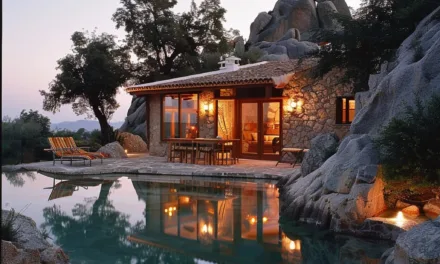In recent years, there has been a significant shift in the world of architecture towards sustainable and environmentally friendly practices. Architects are increasingly embracing green building designs, not only because of the growing awareness of environmental issues but also because of the benefits these designs offer to their clients. Understanding the concept and principles of green buildings is crucial to comprehending why architects are adopting these practices and why they are important for their clients.
Understanding the concept of green buildings
Green buildings, also known as sustainable buildings, are structures that are designed and constructed with a focus on minimizing their environmental impact. These buildings prioritize energy efficiency, resource conservation, and the use of renewable materials. Furthermore, they are designed to improve indoor environmental quality, ensuring the well-being and health of the occupants. The primary aim of green buildings is to reduce the overall carbon footprint, creating a more sustainable built environment.
The principles behind green architecture
Green architecture is guided by several principles that drive the design and construction process. Firstly, architects aim to optimize energy efficiency by implementing features such as insulation, efficient heating and cooling systems, and smart energy management. Secondly, they strive to reduce water consumption by incorporating technologies like rainwater harvesting and water-efficient fixtures. Thirdly, green buildings emphasize the use of sustainable materials and construction techniques to minimize their impact on natural resources. Lastly, these buildings prioritize the well-being of occupants by ensuring proper ventilation, access to natural light, and using non-toxic materials.
Key features of a green building
A green building encompasses various elements that contribute to its sustainability. These include solar panels for renewable energy generation, rainwater collection systems for reuse, and green roofs to mitigate the urban heat island effect. High-performance windows and insulation improve energy efficiency, while natural ventilation and daylight optimization reduce the need for artificial lighting and cooling. Additionally, green buildings often incorporate landscaping, such as vertical gardens and green walls, to enhance aesthetics and provide a connection to nature.
One fascinating aspect of green buildings is their ability to adapt to the surrounding environment. For instance, in colder climates, architects may incorporate passive solar design strategies to maximize heat gain from the sun, reducing the need for artificial heating. On the other hand, in warmer regions, buildings may be designed to promote natural ventilation and shading to minimize the reliance on air conditioning systems. These adaptive features not only reduce energy consumption but also create a harmonious relationship between the built environment and nature.
Furthermore, green buildings play a significant role in promoting sustainable communities. They often serve as educational tools, showcasing innovative technologies and design strategies that can be replicated in other buildings. By setting an example, green buildings inspire individuals and organizations to adopt more sustainable practices, leading to a positive ripple effect on the environment. Moreover, these buildings contribute to the overall well-being of the community by providing healthier indoor spaces, reducing pollution, and conserving natural resources.
The rise of green architecture
The role of architects in sustainable development has become increasingly significant as the world faces urgent environmental challenges. Architects have the unique ability to shape our built environment, and their embrace of green architecture is pivotal in creating a sustainable future.
Green architecture goes beyond just incorporating eco-friendly materials; it involves a holistic approach to design that considers the environmental impact at every stage of the building’s lifecycle. From site selection and construction to operation and maintenance, architects must carefully evaluate each decision to ensure the building’s long-term sustainability. This approach not only benefits the environment but also contributes to cost savings and improved resilience against climate change.
The role of architects in sustainable development
Architects have a crucial role to play in sustainable development. They possess the skills and expertise to design buildings that are not only visually appealing but also environmentally responsible. By incorporating sustainable design principles, architects can reduce energy consumption, minimize waste production, and utilize renewable resources. Moreover, they can create spaces that prioritize the well-being of occupants, improving the quality of life and promoting a healthy lifestyle.
The global trend towards green buildings
Green buildings are not merely a niche concept, but rather a global trend that is gaining momentum. Governments and organizations worldwide are recognizing the need for sustainable development and are implementing policies that encourage the construction of green buildings. This shift towards sustainability is driven by the desire to mitigate climate change, reduce energy consumption, and create healthier living environments. Clients are also increasingly seeking out architects who can deliver sustainable designs that align with their own values.
Furthermore, the rise of green architecture has sparked innovation in the construction industry, leading to the development of new technologies and building techniques. Architects are now exploring innovative solutions such as passive design strategies, green roofs, and renewable energy systems to enhance the sustainability of their projects. These advancements not only benefit the environment but also contribute to the overall resilience and efficiency of buildings in the face of changing environmental conditions.
The benefits of green buildings for clients
The adoption of green building designs offers numerous benefits to clients, including economic advantages and improved health and well-being.
Green buildings are not just a modern trend but a sustainable solution to the ever-growing environmental concerns. By incorporating eco-friendly materials and energy-efficient systems, these buildings play a crucial role in reducing carbon footprint and promoting a greener future for generations to come.
Economic advantages of green buildings
Green buildings can result in significant cost savings for clients in the long term. These buildings are designed to be energy-efficient, reducing utility bills and operational costs. Additionally, many governments offer incentives and tax benefits for constructing green buildings, further enhancing their economic viability. Moreover, green buildings have been shown to have higher property values, providing clients with increased return on investment.
Investing in a green building is not just a financial decision but a strategic move towards sustainability and resilience. Clients who choose green buildings are not only saving costs but also future-proofing their investments against the volatile energy market and stricter environmental regulations.
Health and well-being benefits
Green buildings prioritize the health and well-being of their occupants. They incorporate features like better air quality, natural light, and efficient ventilation systems, which create a more comfortable and productive environment. Studies have shown that occupants of green buildings experience improved cognitive function, reduced sickness rates, and increased overall satisfaction. Clients who invest in green buildings are not only contributing to their own well-being but also fostering a healthier community at large.
The emphasis on health and well-being in green buildings goes beyond physical comfort; it extends to mental and emotional wellness as well. By promoting a connection to nature through biophilic design elements and sustainable landscaping, green buildings offer occupants a sense of tranquillity and harmony within their living or working spaces.
The future of green architecture
As the importance of sustainability becomes more evident, the future of green architecture is promising. Architects are constantly innovating and pushing the boundaries of green building design to create even more efficient and environmentally friendly structures.
Innovations in green building design
Architects are continuously exploring new technologies and materials to further enhance green building design. From energy-efficient building systems and smart grid integration to the use of recycled and sustainable materials, the possibilities for innovation are endless. Additionally, green building designs are increasingly incorporating elements like biophilic design (a connection to nature) and regenerative design (creating buildings that give back to the environment).
The impact of policy and regulation on green architecture
The future of green architecture is also influenced by policy and regulation. Governments worldwide are recognizing the need to address climate change and reduce carbon emissions, leading to the implementation of stringent regulations and building codes. These measures encourage architects and clients to embrace sustainable design practices and contribute to a greener future.
Architects are designing green buildings because they understand the importance of creating a sustainable and environmentally responsible built environment. Through the adoption of green building designs, they are not only fulfilling their professional duties but also offering numerous advantages to their clients. Green buildings encompass principles that prioritize energy efficiency, resource conservation, and the well-being of occupants. These buildings not only reduce environmental impact but also result in long-term economic savings and improved health and well-being.
One fascinating aspect of green architecture is the integration of renewable energy systems. Architects are exploring innovative ways to harness the power of the sun, wind, and water to generate clean and sustainable energy for buildings. For instance, solar panels can be seamlessly integrated into the design of a building’s façade, providing both energy and an aesthetically pleasing appearance. Similarly, wind turbines can be strategically placed on rooftops or integrated into the building’s structure, harnessing the power of the wind to generate electricity.
Furthermore, green architecture is not limited to new construction projects. Architects are also finding ways to retrofit existing buildings to make them more sustainable. By incorporating energy-efficient lighting, insulation, and heating systems, older structures can be transformed into eco-friendly spaces that reduce energy consumption and minimize environmental impact.
As the world increasingly values sustainability, architects are driving the future of green architecture through innovation and the adaptation of policy and regulation. Embracing green building design is not merely a trend; it is a necessary step towards a more sustainable and resilient future.
We are currently collaborating with or actively testing more than 20 brands that align with our rigorous standards.










